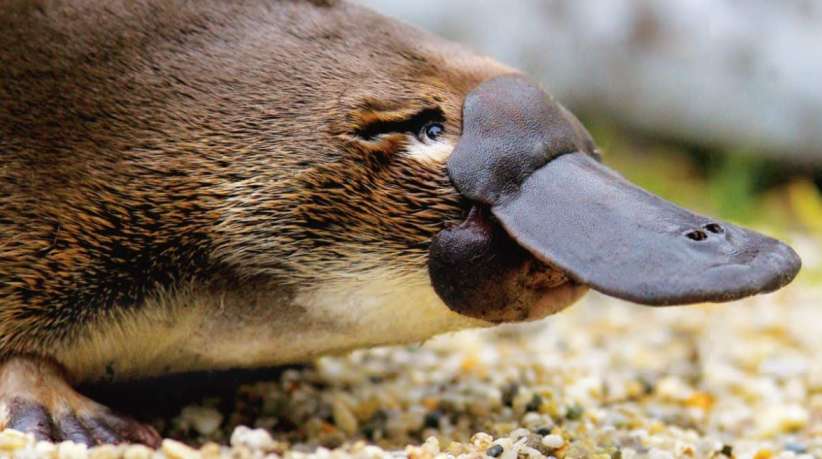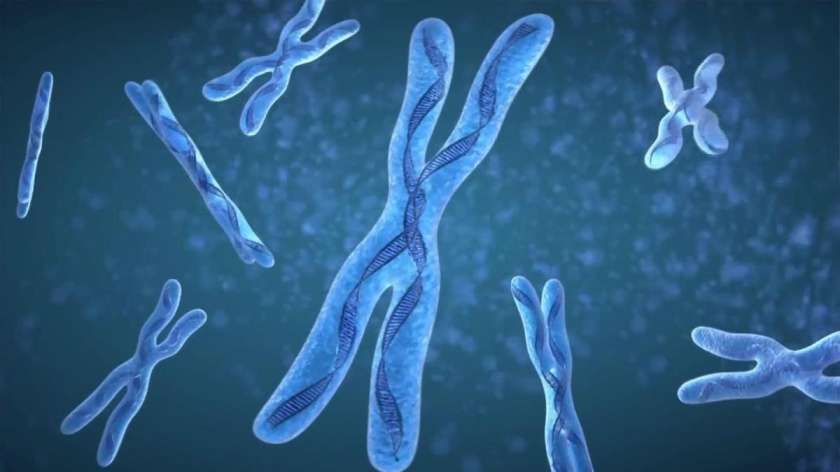With 10 sex chromosomes and a mixture of 3 types of biological characteristics

In 1798, a man named John Hunter sent a special specimen to the British Museum. When this specimen appeared in front of scientists, almost no one believed that it was a real animal because of its strangeness. So much so that scientists are still arguing about it for the next 85 years.
This strange specimen came from Australia. It was about the size of a rabbit, with a body like a mole, a tail like a beaver, webbed limbs, and a mouth like a duck. It’s too magical.

All naturalists thought it was a prank, that someone had carefully crafted this “false specimen,” but they couldn’t find any flaws. When this specimen was exhibited in the London Museum, visitors flocked, everyone hoped to find the “hidden thread,” but no one succeeded, because this is a real creature—a platypus.
Has three types of biometrics
10 sex chromosomes and a mixture of 3 types


After scientists confirmed the existence of the platypus, a new problem emerged, namely the classification of the animal. Although the platypus has tight, smooth fur, which is very consistent with the characteristics of mammals, it has not been found on its body. nipple. Even the mammary glands of the platypus were only discovered by scientists in the 1830s.
After further dissection, scientists discovered that the platypus has a cloaca that is unique to birds and reptiles, which means that they rely on this organ for excretion and reproduction chromosomes.
According to the Australian aborigines, a duck that ran away from home was taken away by a huge water rat. After the duck fled back, it gave birth to two eggs, and the one that hatched was a platypus. Although this is just a story, it also highlights a characteristic of the platypus: egg-laying.

But if it is a bird, it does not have a stomach organ in its body, and the esophagus and intestines are directly connected, which does not conform to the characteristics of birds at all. On the contrary, in some lower mammals and fish appears in.
All kinds of contradictory performances made scientists scratch their heads. In the end, scientists had to set up a brand new category under the class of mammals: chromosomes monotremes. Of course, a monotreme echidna was later discovered, which also lives in magical Australia.
peculiar duckbill


The most prominent feature of the platypus’ appearance is its duckbill, which is also the origin of its Chinese name. However, its beak is similar to that of a duck in appearance, but it is very different. The mouth of the platypus is not hard, but soft and elastic like rubber, and it also has very magical functions.
When the platypus dives into the water for food, its eyes, ears, and nostrils are all closed, which means that the platypus is deaf and blind at this time. But they can still accurately find small fish and shrimp, all kinds of insects, worms, and shellfish, and they do not use intuition, but electromagnetic induction.
The platypus’ bill is densely packed with sensitive nerve endings and a sensor that picks up weak bioelectric currents. Although we usually don’t feel it, any living body will generate bioelectricity as long as it is still alive. The platypus finds its prey by sensing bioelectric currents.
Read More:- Big Ear Tutu “ear-moving magic skill” is actually an atavistic phenomenon 6 million years ago
Moreover, when they are hunting, they do not eat the food directly but store it in a “small pouch” on the cheek first, so their movements are very smooth and there is almost no time to stop. chromosomes After they have finished hunting, they slowly begin to process their prey.

Because there is a duckbill, it is impossible to chew, so another feature of mammals: teeth, was also given up by the platypus. Only juvenile platypuses have teeth, and they lose all of them when they reach adulthood. Instead, there are horny plates that grow continuously on the gums. The platypus uses horny plates to grind up food and finish eating.
They eat a lot. A platypus eats 20% of its body weight in a day. If it is a lactating female platypus, it can even eat food equal to its weight.
retractable fins


Platypus is also a master builder. Their nests are generally built on the edges of rivers and lakes. They rely on their strong forelimbs to dig holes, and they don’t have to worry about the webs on their feet being injured because their webs are different from other animals. The claws of tigers are also retracted. When they are on the shore, they will retract the webs into the palms of their feet, exposing their sharp claws.
The entrance of the platypus nest is generally 20 centimeters above the water’s surface, chromosomes but the depth of the cave can reach more than 15 to 20 meters. If this depth is calculated according to the height standard of our underground floor of 2.2 meters, it is equivalent to about seven or eight floors underground, and the platypus is still alive. Three escape exits will be dug.
In the entrance and exit, the platypus has also set up various partitions, which can adjust the temperature and humidity in the cave and can also prevent predators from invading, making it comfortable and safe.
The platypus that “looks the same”


In 2008, the United States, Australia, the United Kingdom, and other countries sequenced the gene of a female platypus and found that they are really “the same,” chromosomes not only having the characteristics of reptiles, birds, and mammals in appearance but also genetically See, the platypus also contains some genes unique to all three types of animals.
Read More:- It is most effective to eat this kind of walnut
For example, the three genes that produce egg yolk can provide all the nutrients needed for the development of oviparous animals. chromosomes These three genes are useless for viviparous mammals because they do not lay eggs, but compared with normal birds and reptiles, the platypus has genes that can only maintain the formation of eggs. Therefore, the platypus also has the gene for mammals to secrete milk and relies on milk to provide nutrition for the growth of the young platypus.
However, platypi do not have nipples, and their duckbills do not support the action of “sucking.” So their breastfeeding method is completely different from that of other mammals. Its milk seems to be sweating, seeping out from the pores on the skin of the abdomen, and gathering through the fur to a depression on the platypus’ belly, and the little platypus lies on its mother’s belly to lick the milk.
Artificial feeding baby platypus
Because the milk is in direct contact with the outside world, it is unavoidably exposed to various bacteria. To prevent the baby platypus from being infected by bacteria, the milk secreted by the platypus also contains a unique antibacterial protein. chromosomes If this protein can be used in medicine, it will be a breakthrough in the history of medicine.
Read More:- Nubia Z50 official images revealed | December 19 launch
In addition, the platypus also has a gene for toxin production, which is extremely rare in mammals, but more commonly found in reptiles such as snakes and lizards. The platypus does not have a venom gland, but the male platypus has a venomous spine on its hind foot, which stores venom made up of a mixture of various toxic proteins. Among them, three kinds of toxic proteins are unique to the platypus. They can not only sting but also spray venom, like a poisonous snake. out.


Their venom is capable of killing an animal the size of a dog, and while not lethal to a human, it is enough to incapacitate a human. chromosomes After being stung by a platypus’ stinger, the entire wound swells rapidly and is excruciatingly painful. This severe pain may last for dozens of days or even months.
However, platypus stingers are not used for hunting, but for mating rights, so only male platypi have venom, and only in spring and winter, during their mating season, the venom will be produced.
Scientists have also found that the proteins in their venom can also alleviate the condition of cancer patients. Perhaps through the study of these proteins, human beings will defeat the monster of cancer one day in the future.
The platypus doesn’t stop there as far as being genetically special, their sex chromosomes are also very strange. Humans and most other mammals usually determine sex by two sex chromosomes, X and Y, but the platypus has 10 sex chromosomes in its body, and after comparison, the genes on the sex chromosomes are more similar to those of birds.


After tens of millions of years of evolution, the platypus has never been extinct, and it has become the oldest mammal in existence. It has the characteristics of three types of animals, and it seems to have stopped at the intersection of evolution. Whenever we know more about it, we will. There will be new problems and controversies. No wonder some people say that if there is no record, I am afraid that human beings thousands of years later will not be able to imagine that such a magical creature existed in the world.









